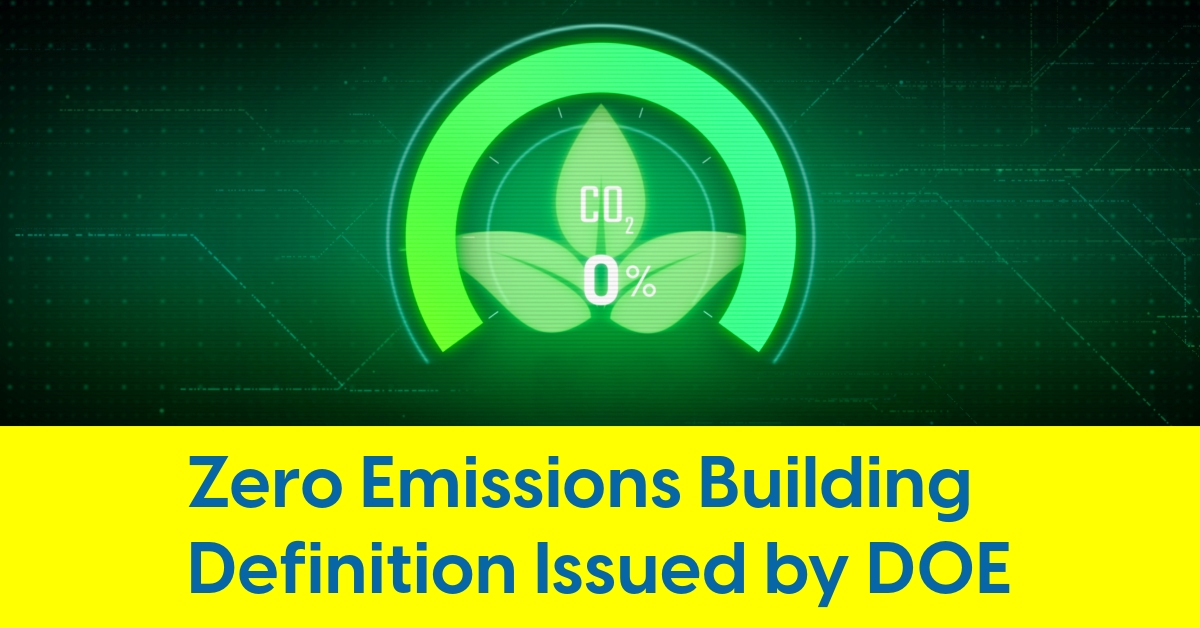June 6, 2024
Zero Emissions Building Definition Issued by DOE
Guidance provides measurable criteria for buildings to qualify as zero emissions
The U.S. Department of Energy (DOE) announced a National Definition of a Zero Emissions Building aimed at advancing efforts to decarbonize the building sector. This new definition sets out standardized criteria for public and private entities to help transition towards zero greenhouse gas (GHG) emissions, supporting national climate goals.
The National Definition of a Zero Emissions Building is intended to provide measurable criteria for buildings to qualify as zero emissions. This will aid the building sector in reducing GHG emissions, supporting both public and private climate initiatives.
While the document does not specifically address lighting topics, achieving zero emissions in buildings includes using energy-efficient lighting systems. Efficient lighting, such as LED lighting and smart controls, can significantly reduce a building’s overall energy use, helping meet the stringent energy efficiency standards outlined in the definition.
The Definition was finalized after industry, academia, research laboratories, government agencies, and other stakeholders responded to a request for information seeking feedback on a draft definition. The request for information was published on EERE Exchange and the Federal Register in January 2024 and comments were accepted through March 6, 2024.
Part 1 of the Definition focuses on operational emissions from energy use in buildings. It sets out criteria for buildings to achieve zero operational emissions. Future sections are expected to address additional factors such as embodied carbon, refrigerants, indoor air quality, water efficiency, and waste management.
Criteria for Zero Emissions Buildings
Energy Efficiency:
Existing buildings must either achieve an ENERGY STAR score of 75 or higher, be 35% better than the median Energy Use Intensity (EUI) for their category, or meet the latest ANSI/ASHRAE/IES Standard 100 requirements.
New buildings must use 10% less energy than the model code, achieve an ENERGY STAR score of 90 or higher, or be certified under the latest ENERGY STAR Residential New Construction or Zero Energy Ready Homes programs.
Free of On-Site Emissions:
Buildings must have zero direct GHG emissions from energy use. Emergency backup generators are exempt when grid power is unavailable.
Powered Solely from Clean Energy:
All energy used must come from clean sources, both on-site and off-site. If district energy systems are used, they must also be powered by clean energy.
Implementation Guidance
"The Definition is not a regulatory standard. It is guidance that public and private entities may adopt to determine whether a building has zero emissions from operational energy use, including emissions from tenants."
- U.S. Department of Energy
The definition serves as guidance rather than a regulatory standard. It can be adopted by entities for both new and existing buildings, including commercial and residential structures. The DOE provides additional implementation guidance, but entities must determine their methods for documenting and verifying compliance.
Electric vehicle supply equipment (EVSE) is not considered part of the building's energy load under this definition. Building owners are encouraged to use tools like the EPA’s ENERGY STAR Portfolio Manager for documentation.
Updates and Review
The DOE plans to periodically review and update the definition criteria based on technological advancements and market responses. This will ensure continued progress towards energy efficiency and low carbon activity.
The National Definition of a Zero Emissions Building provides a clear framework for stakeholders in the building sector to reduce operational emissions, contributing to broader environmental and climate goals.











